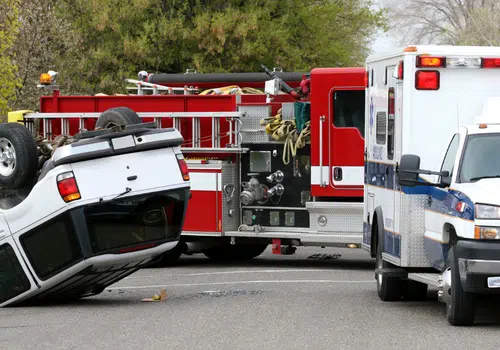If you’ve been in a car accident, you may be wondering what to do next. Proving your case can seem daunting, but with the right information, you can make it happen.

Gathering Evidence to Prove Your Car Accident Case
The first step in proving your car accident case is to gather evidence. This can include:
- Photos of the scene: If you have a camera or smartphone, take pictures of the damage to both vehicles involved in the accident. Be sure to get shots of the license plates too.
- Witness statements: If there were any witnesses to the accident, get their names and contact information. They may be able to provide valuable testimony about what happened.
- Medical records: It is important to obtain copies of all medical records related to the accident, including any hospitalization, X-rays, MRIs, prescriptions, follow up doctors’ appointments, etc.
It’s important to document as much as possible so you have a solid foundation for your claim.
Do I Need a Police Report?
In some cases, yes. A police report can help prove your case, but it’s not always necessary. If there are any injuries or significant damage, it’s a good idea to file a report if the police do not come to the scene of the accident. The report can also be used as evidence in your case.
What Is Comparative Negligence?
Comparative negligence is a legal doctrine that can be used to determine liability in a car accident. It states that if both parties are at fault, the amount of damages each party is responsible for will be based on their percentage of fault.
For example, if you were in an accident with another driver who ran a red light, and you were speeding, both of you could be found to be at fault. If you are found to be more than 50% at fault, then you would not be eligible to recover damages.
Calculating Damages in a Car Accident Claim
The next step is to calculate the damages you are owed. Damages refers to the financial losses you have suffered as a result of the accident. There are two types of damages commonly included in personal injury claims related to car accidents: economic damages and noneconomic damages.
Economic damages are those that have a specific monetary value. To calculate economic damages, simply add up all out-of-pocket expenses related to the accident. This includes medical bills, property damage, and lost wages.
Noneconomic damages are more difficult to calculate but can include pain and suffering, emotional distress, and loss of enjoyment of life. To calculate non-economic damages, you will need to determine the value of your pain and suffering. In Florida car accident cases, this is often done by using a multiplier based on the severity of the injuries.
For example, if you have suffered $10,000 in economic damages and you have a minor injury that causes some pain and suffering, you may multiply your economic damages by 2 to get a total of $20,000. If you have suffered a more severe injury that has caused significant pain and suffering, you may multiply your economic damages by 3 or 4 to get a total of $30,000-$40,000.
How a Winter Haven Car Accident Attorney Can Help
Proving your car accident case can be complicated. An experienced Winter Haven car accident attorney can help you gather evidence, calculate damages, and negotiate with the insurance company.
Tania Rivas and Rivas Law Group have helped many car accident victims get the compensation they deserve. Call (863) 299-5539 today to schedule a free consultation and get help protecting your rights.






